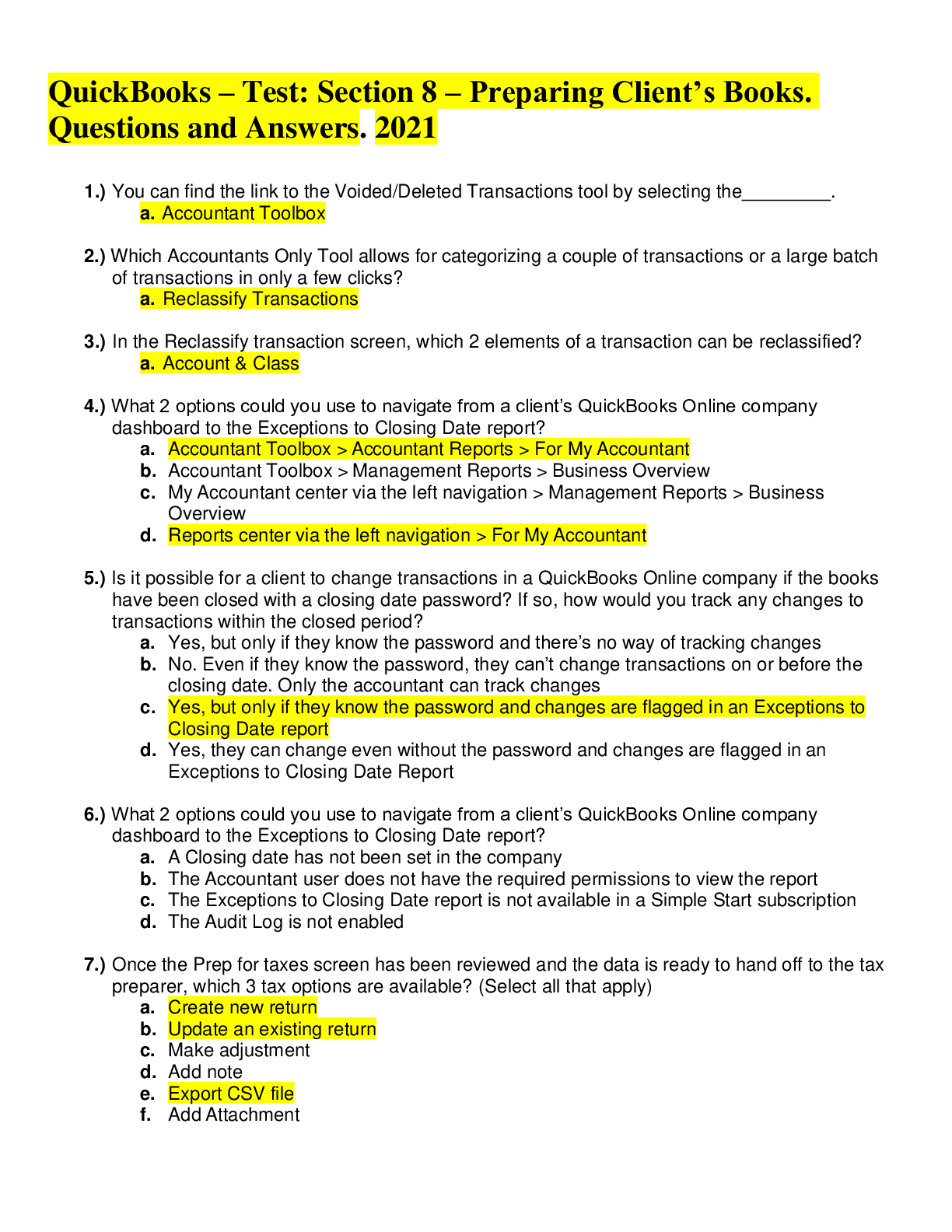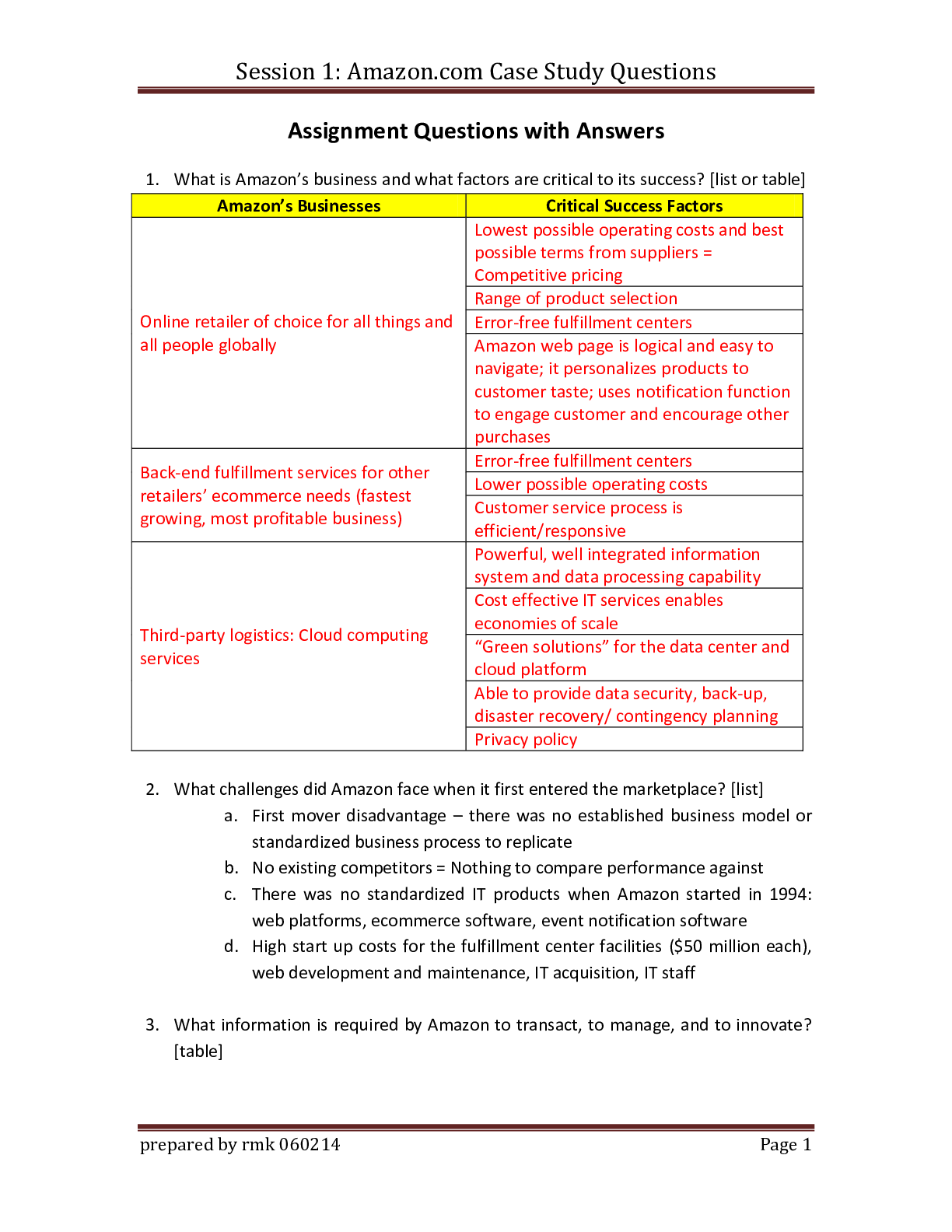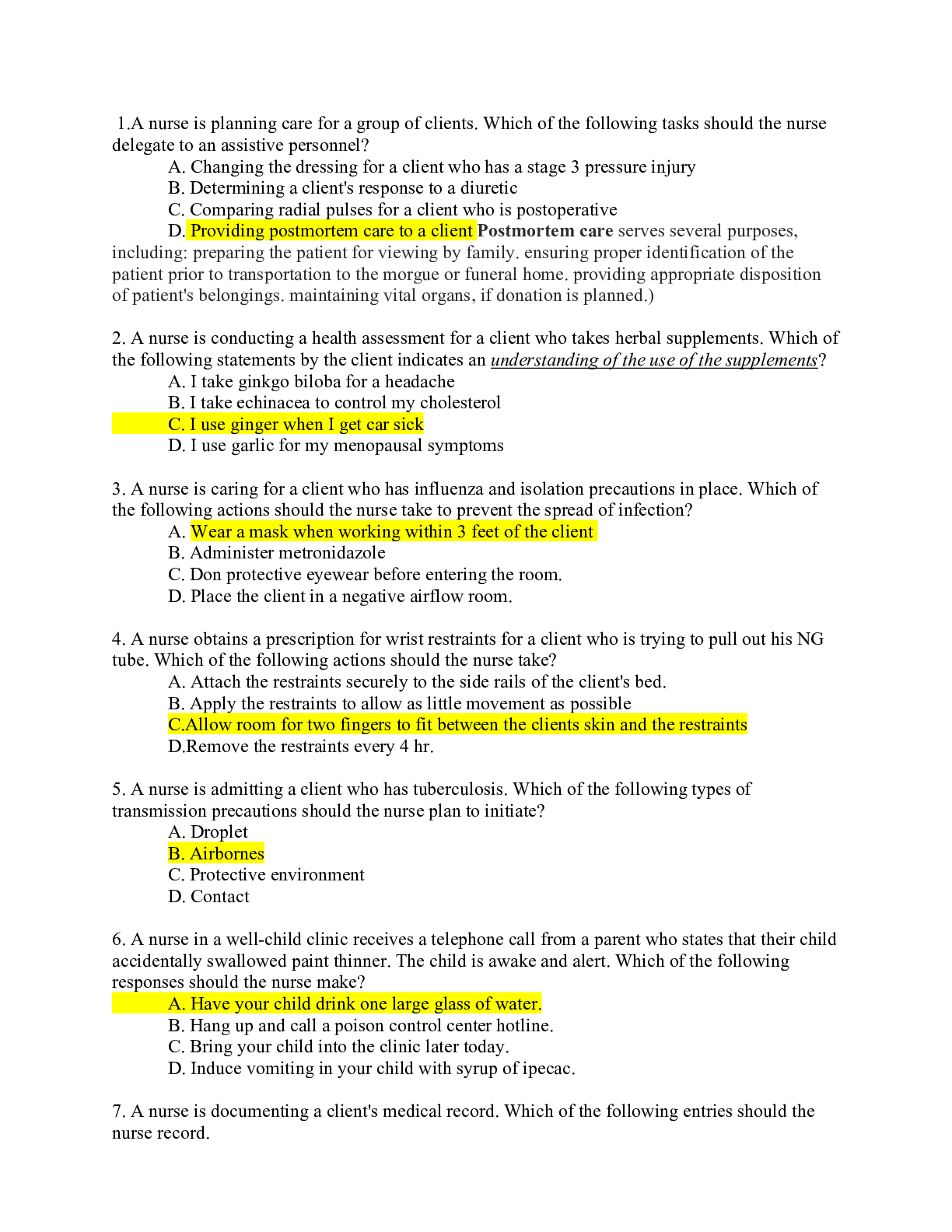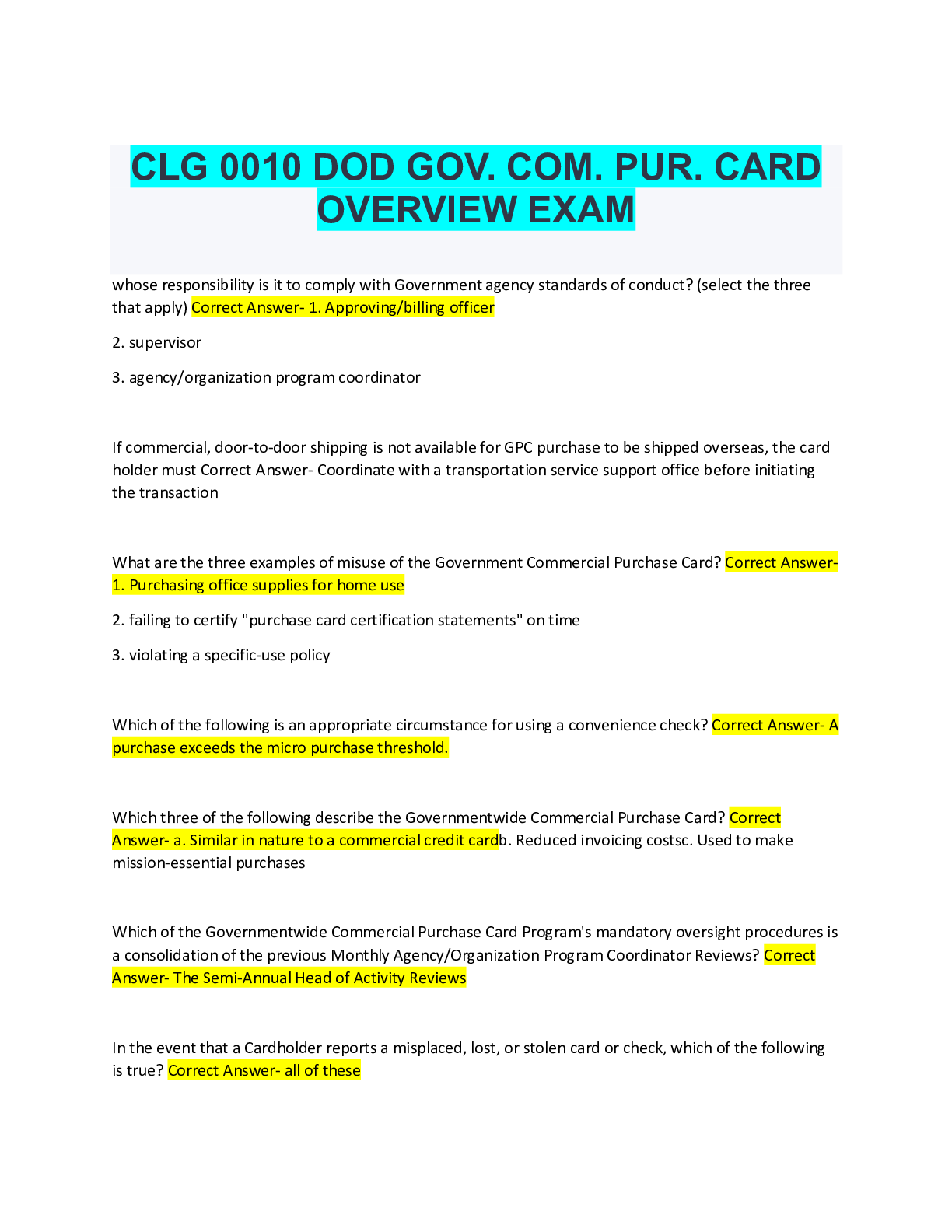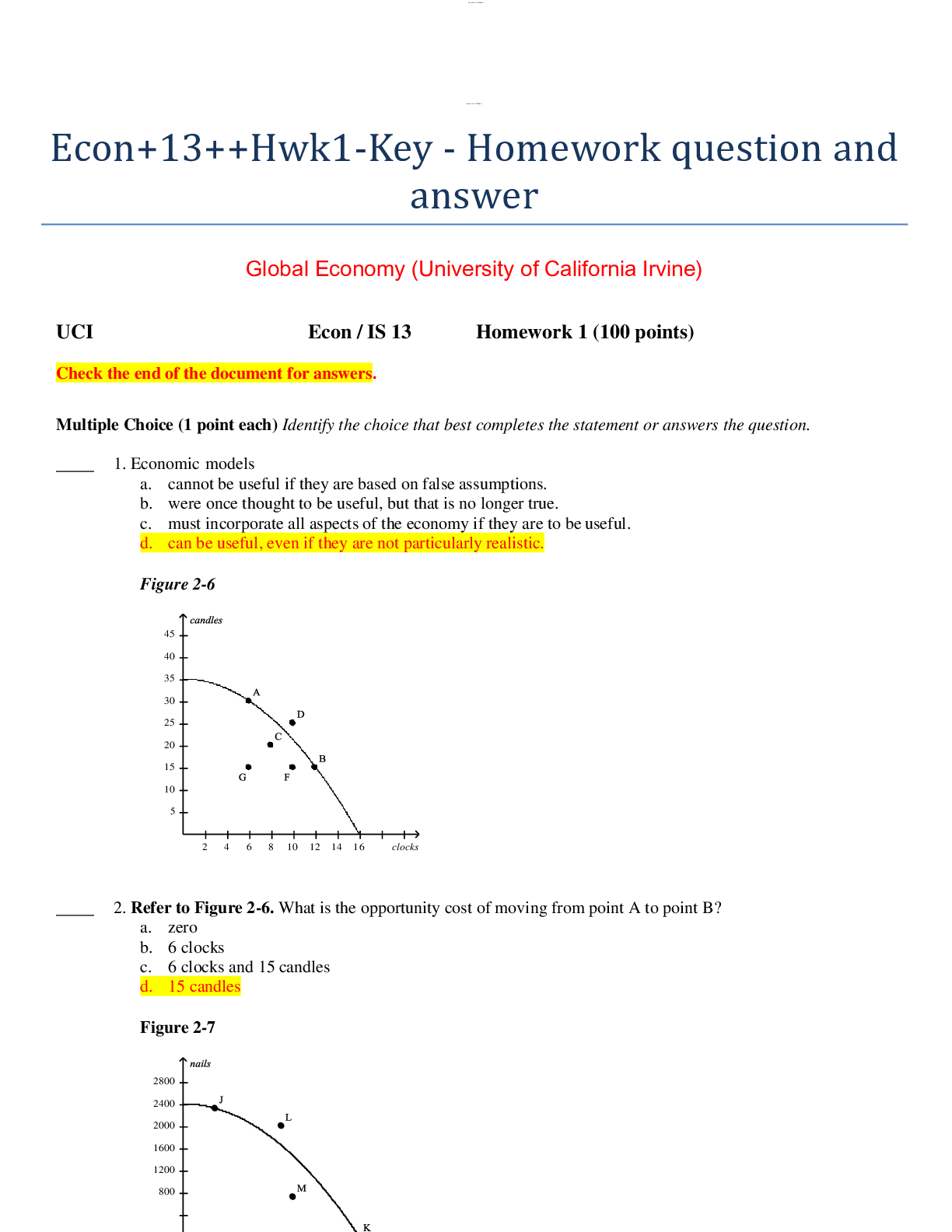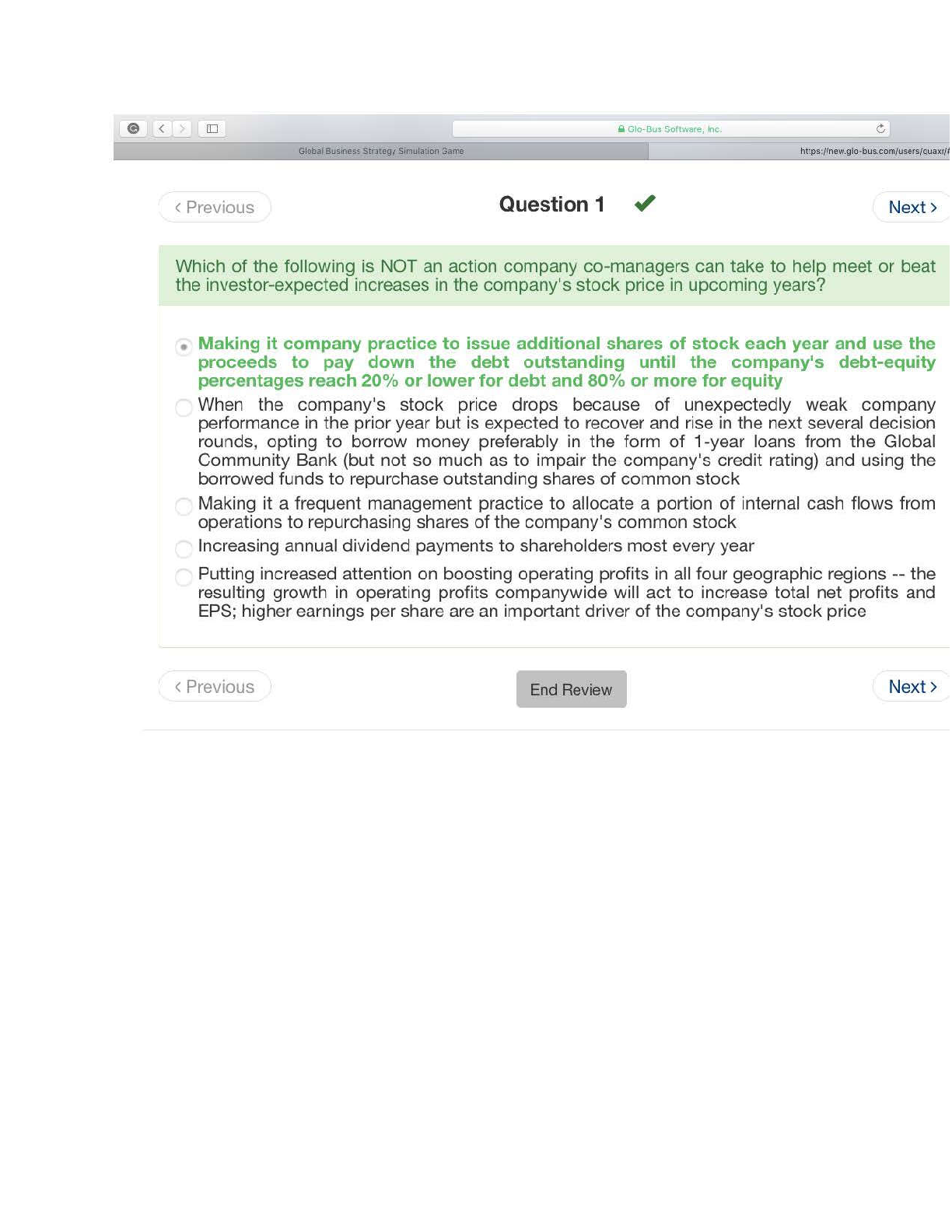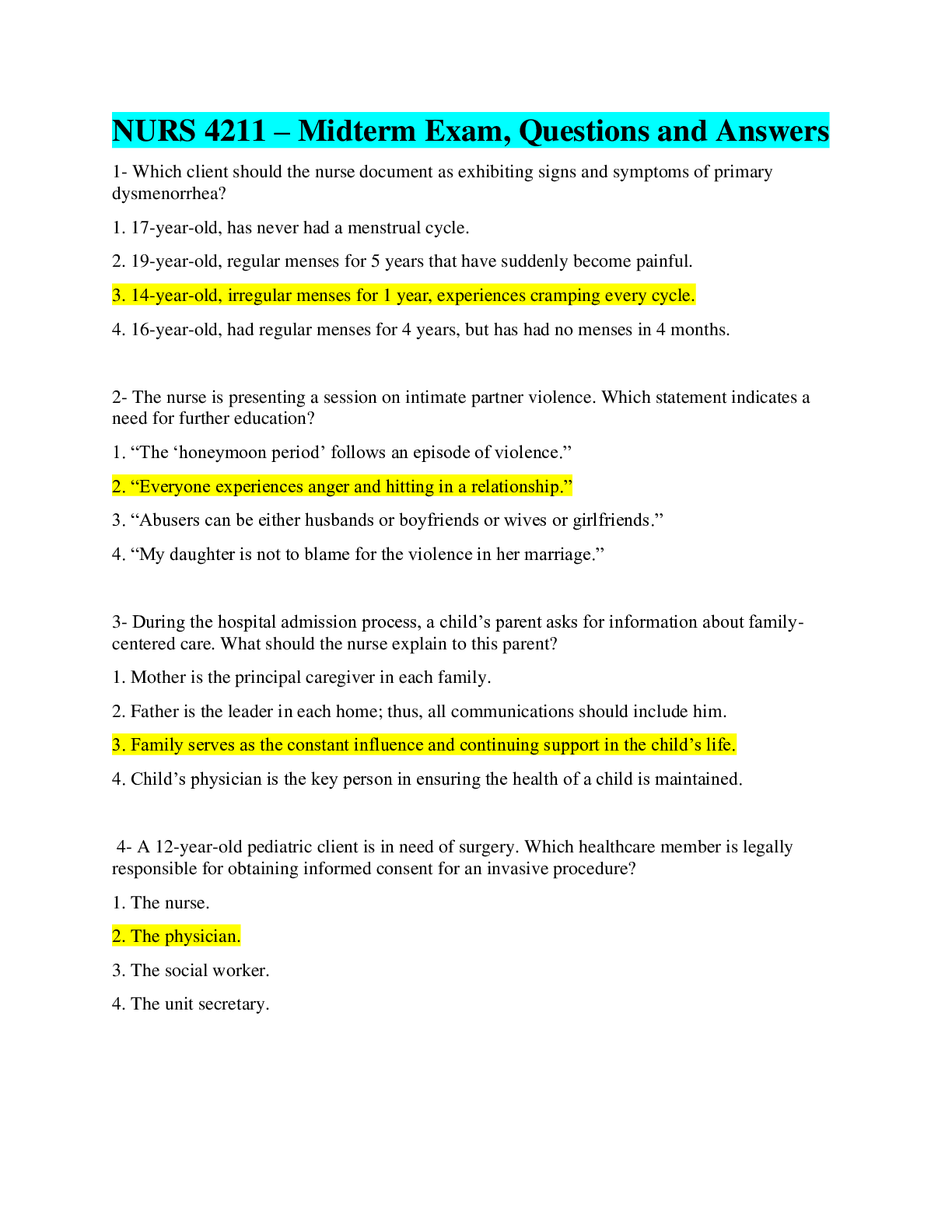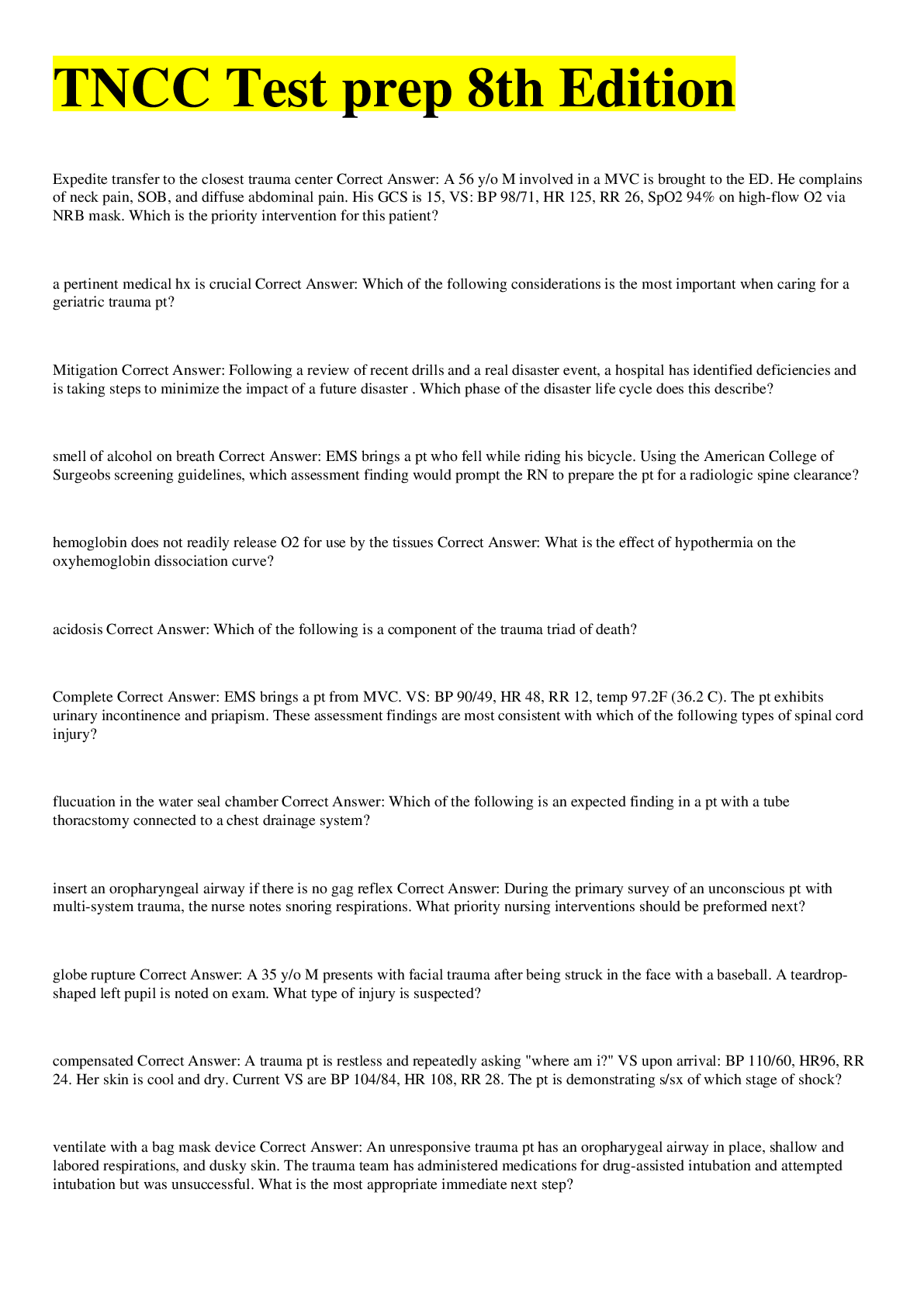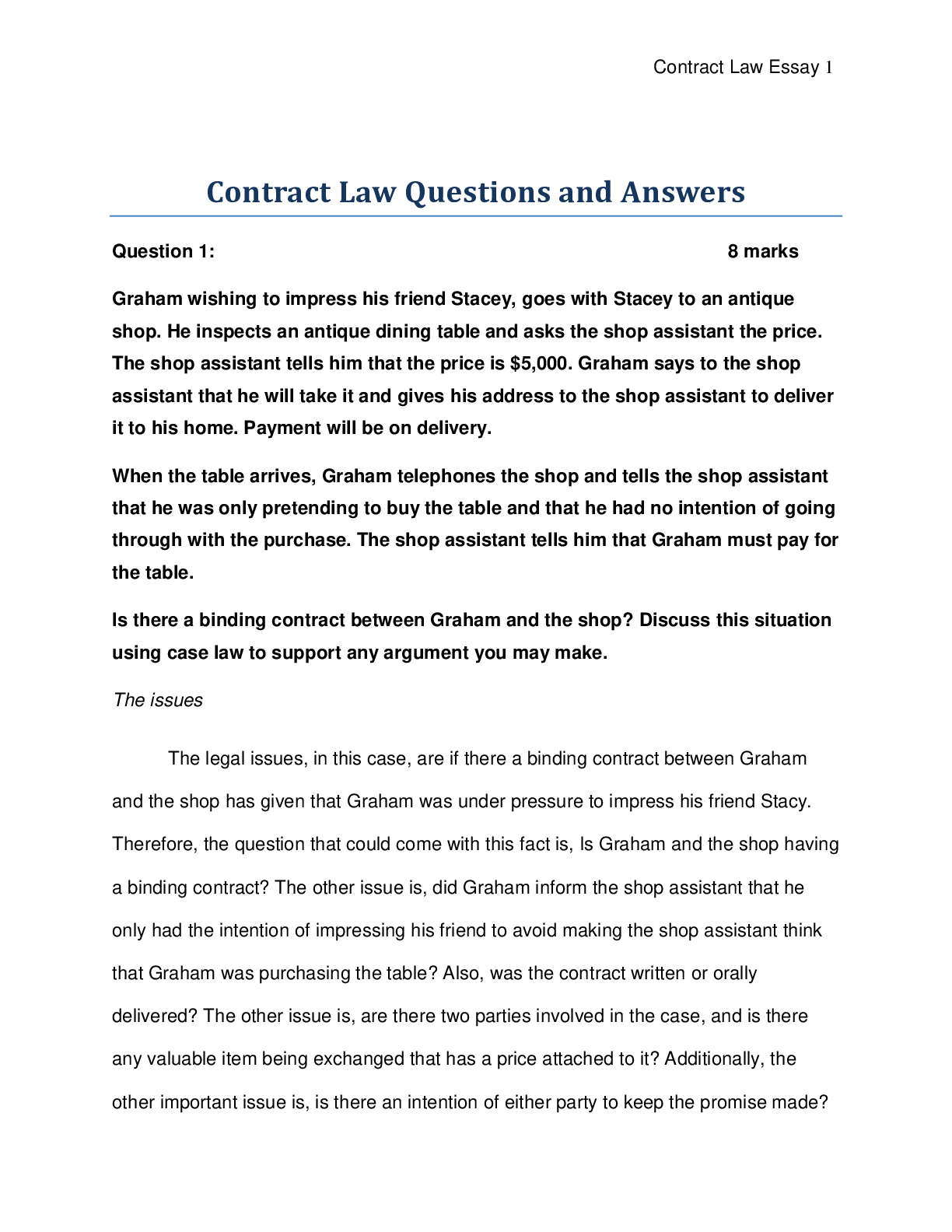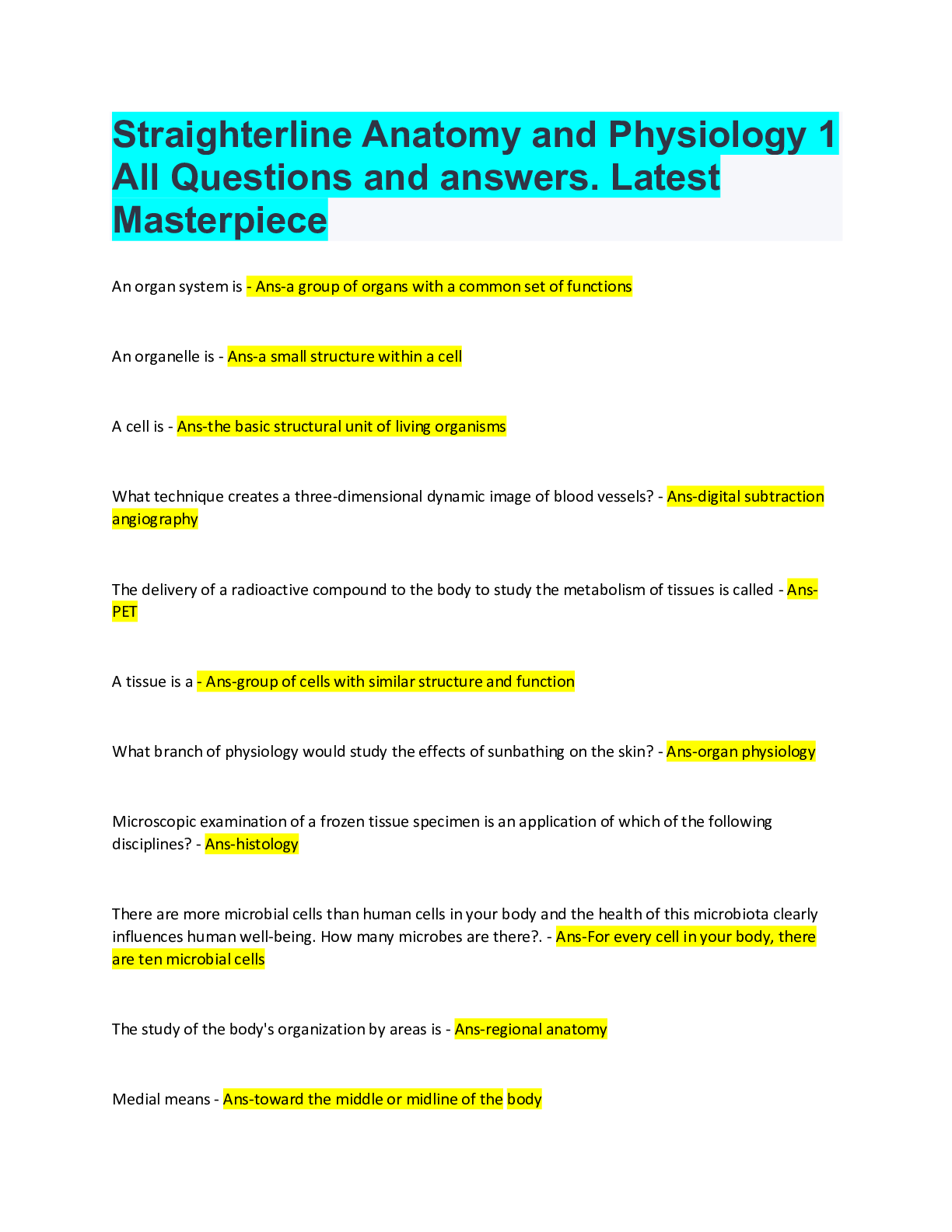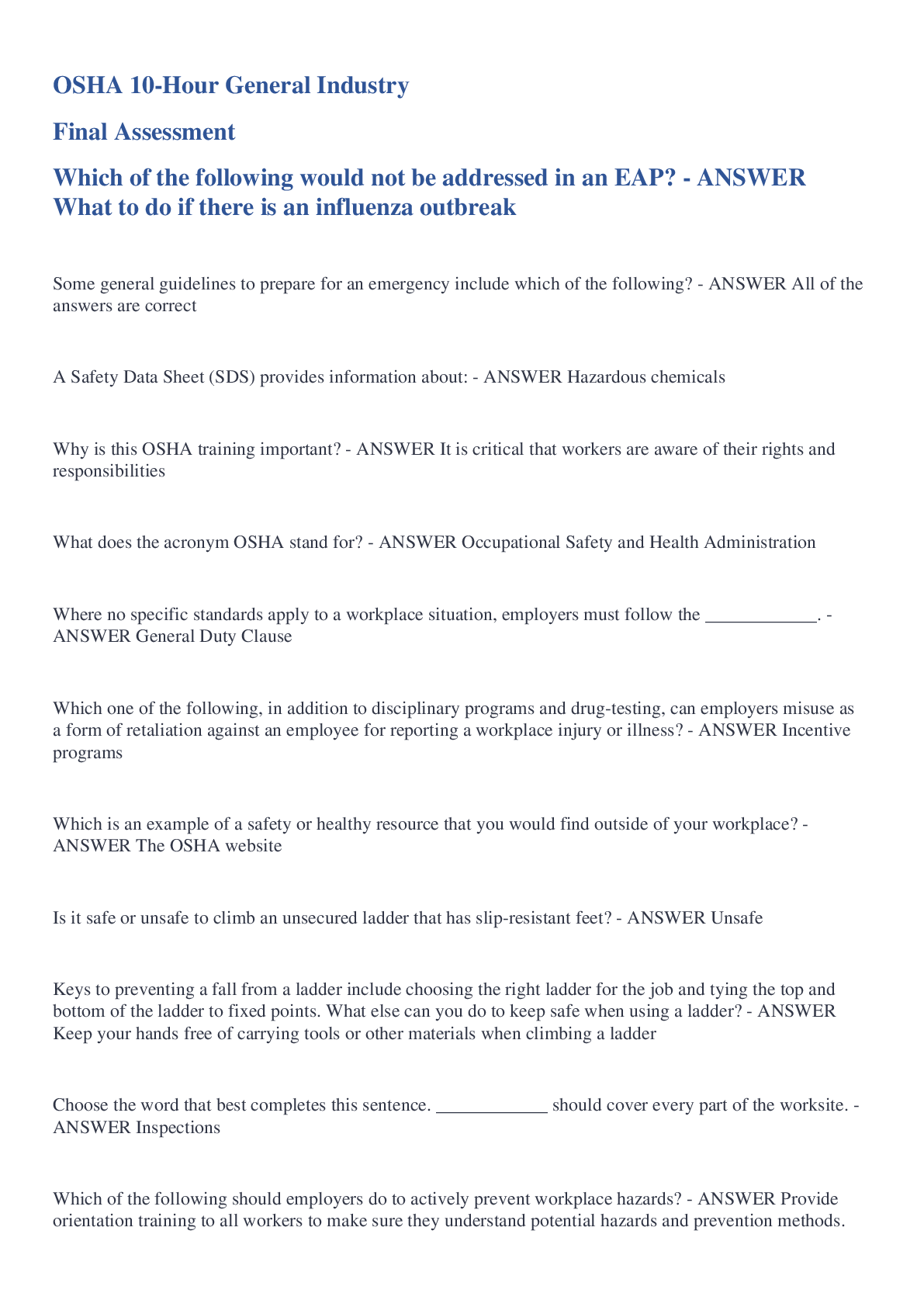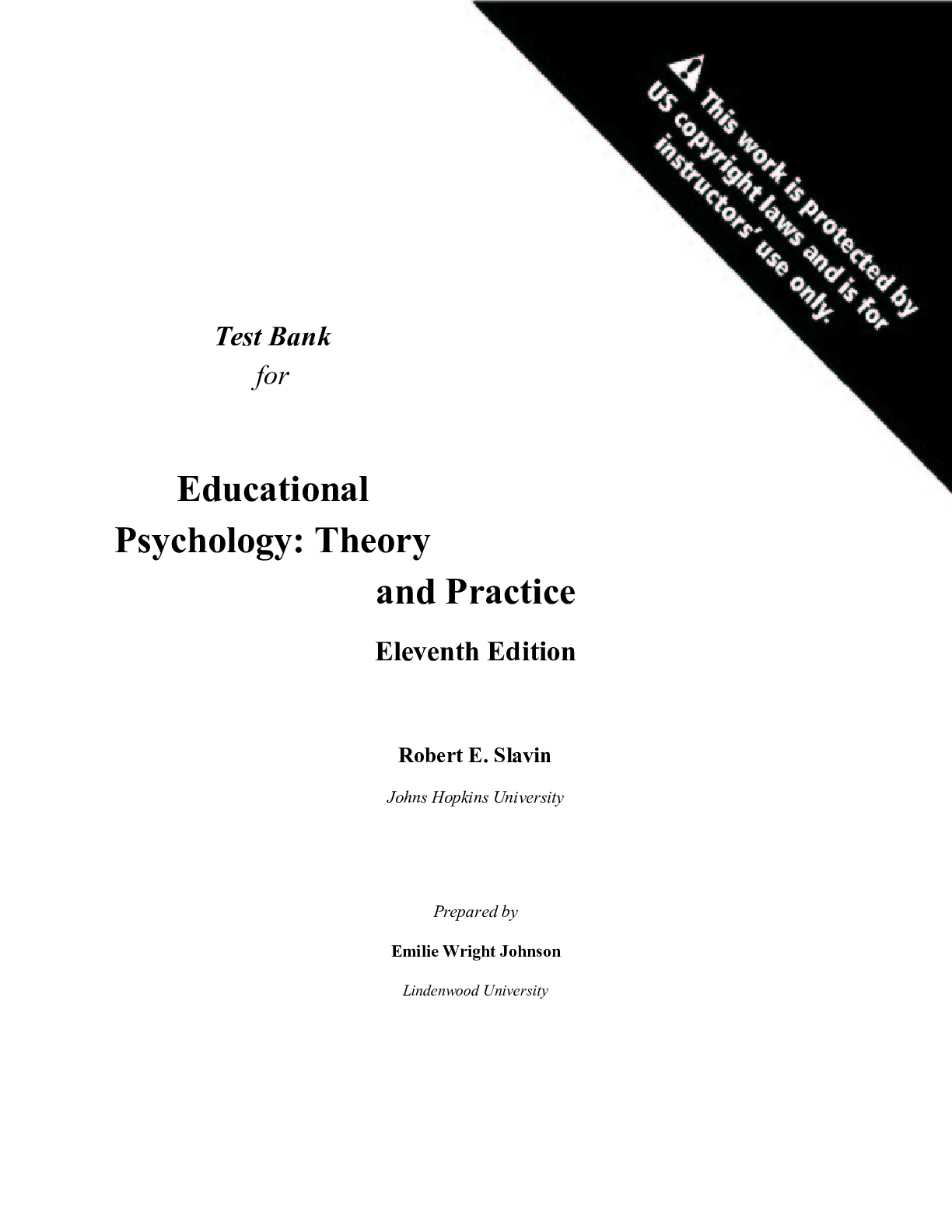SCIENCE 101 > QUESTIONS & ANSWERS > IB ESS Exam Review Vocabulary 1-8/ ESS IB Exam - ESS- Environmental Systems and Societies. Contains (All)
IB ESS Exam Review Vocabulary 1-8/ ESS IB Exam - ESS- Environmental Systems and Societies. Contains 500 Questions and Answers.
Document Content and Description Below
IB ESS Exam Review Vocabulary 1-8/ ESS IB Exam statistical data relating to the population and partic- ular groups within it. The number of years needed to double a population, assuming a constant r... ate of natural increase. The number of deaths per year per 1,000 people. The number of live births per year per 1,000 people. the average number of children a woman of child- bearing years would have in her lifetime, if she had children at the current rate for her country crude birth rate - crude death rate / 10 (ignore migra- tion) A measurement of the number of persons per unit land area. Indicator of level of development for each country, constructed by United Nations, combining income, literacy, education, and life expectancy a country with low to moderate industrialization and low to moderate average GNP per capita. a highly industrialized country with high average GNP per capita. The average number of years an individual can be expected to live, given current social, economic, and medical conditions. Life expectancy at birth is the average number of years a newborn infant can expect to live. Malthus' theory that population increase would out- pace increases in the means of subsistence demographics doubling time crude death rate crude birth rate fertility rate natural incease population density Human Develop- ment Index (HDI) Less economically developed country (LEDC) More economi- cally developed country (MEDC) life expectancy Malthusian Theo- ry 13. 14. 15. 16. 17. 18. Strongly disagreed with Malthus. Thought that if peo- ple were threatened by malnutrition they would have more drive to provide The number of people in an area exceeds the capacity of the environment to support life at a decent stan- dard of living. The percentage of children who die before their first birthday within a particular area or country. Visual representations of the age and sex composi- tion of a population whereby the percentage of each age group (generally five-year increments) is repre- sented by a horizontal bar the length of which rep- resents its relationship to the total population. The males in each age group are represented to the left of the center line of each horizontal bar; the females in each age group are represented to the right of the center line The process of change in a society's population from a condition of high crude birth and death rates and low rate of natural increase to a condition of low crude birth and death rates, low rate of natural in- crease, and a higher total population. high stationary - high birth rate and high death rate in an LEDC Boserup's Theory overpopulation infant mortality population pyra- mids demographic tran- sition model (DTM) Stage 1 - DMT 19. Stage 2 - DMT 20. 21. 22. 23. 24. 25. 26. 27. 28. early expanding - high birth rate but decreasing death rate due to improved economy, food supply and health - large population increase in an LEDC late expanding - death rate is still falling, birth rate is also starting to fall as access to contraceptives and family planning increases - still a large population increase in an LEDC low stationary - low birth rate and low death rate, this is in an MEDC - means population growth slows or even reaches 0 declining - fertility rate is dropping even further and death rate is low - average number of children is less than 2, and so population size is decreasing - only in some MEDCs (such as in Europe) population growth of Europe is falling, and its popu- lation is ageing A term sometimes used by economists for natural re- sources that, if appropriately managed, can produce a "natural income" of goods and services. The natural capital of a forest might provide a continuing natural income of timber, game, water and recreation. Renewable resources such as plants, animals, and soil provided by the earth's natural capital. the maximum rate at which a renewable resource can be exploited without impairing its ability to be renewed or replenished Natural resources that have a sustainable yield or harvest equal to or less than their natural productivi- ty; for example, food crops, timber. Natural resources that cannot be replenished within a Stage 3 - DMT Stage 4 - DMT Stage 5 - DMT greying of Europe natural capital natural income maximum sustain- able yield renewable natural capital non-renewable timescale of the same order as that at which they are natural capital 29. 30. 31. 32. 33. 34. 35. taken from the environment and used; for example, fossil fuels. Non-living natural resources that depend on the en- ergy of the Sun for their replenishment; i.e. ground- water. use or utilization, especially for profit - often has negative inference the importance of a resource which changes over time e.g. flint - in past extremely important for tools, now, not so uranium - in the past, unknown, unable to utilise, now - extremely valuable due to increased nuclear power natural capital that we can put a price on - economic price in market - ecological functions, e.g. water storage or gas ex- change in forests - recreational function, e.g. tourism, leisure natural capital that is almost impossible to put a price on - the intrinsic value (right to exist) - future uses that do not know about yet (science, medicines, gene pool) - value in existing for future generations - existence value Usually The System of Environmental-Economic Ac- counting - sometimes Socio-economic Environmen- tal Assessment valuation of a nations environment with the aim of encouraging nations to conserve their natural capital replenishable nat- ural capital exploitation dynamic nature of natural capital use valuation non-use evalua- tion SEEA 36. 37. 38. 39. 40. 41. all the solid waste created by households: - biodegradable - recyclable - WEEE (waste electrical and electronic equipment) - hazardous - toxic - medical - inert - mixed Spiral loop system or self-replenishing economy designers must consider use of material after product use so the materials need to be recovered and used again take, make, dump industrial economy that the material flows only go one way, from resource o production to consumption to waste without reentering the biosphere or circula- tion use fewer resources - the best way to reduce SDW when products are used for something other than their original purpose when returned to the manufac- turer the sorting of materials into different types, and then transported to recycling plants a plastic material used commonly in packing or take- away foods - takes 500 years to break down/dissolve solid domestic waste (SDW) circular economy linear economy reduce (strate- gies for minimising waste) reuse (strategies for minimising waste) recycle (strate- gies for minimising waste) styrofoam 42. landfill also known as a dump; a site for the disposal of waste materials by burial and is the oldest form of waste treatment. 43. Advantages-volume of waste reduced by 90% and waste heat can be used. Disadvantages-toxic emis- sions (polyvinyl chloride, dioxin), scrubbers and elec- trostatic precipitators needed, ash disposal. incineration 44. is the decomposition of waste under anaerobic con- ditions to produce biogas and a compost-like residue anaerobic diges- tion 45. Theoretical estimates of the numbers of humans who could inhabit Earth at the same time human carrying capacity 46. Land and water area appropriated by each nation as a resource to consume or to absorb the waste it generates; should sustainably provide all resources at the rate at which they are being consumed by a given population ecological foot- print 47. per capita food consumption (kg/ha/yr) ------------------------------------------------ mean food production per hectare of arable land (kg/ha/yr) ecological foot- print calculation + per capita CO2 emission (kg C/yr) ------------------------------------------------ net fixation per hectare of local natural vegetation (kg C/ha/yr) 48. species a group of organisms sharing common characteris- tics that interbreed and produce fertile offspring 49. a group of organisms of the same species living in the population same area at the same time, and which are capable of interbreeding 50. 51. 52. 53. 54. 55. 56. 57. 58. 59. the environment in which a species normally lives non-living, physical factors that influence the organ- isms and ecosystem, e.g. temperature, sunlight, pH, salinity, pollutants. the living components of an ecosystem - organisms, their interactions or their waste - that directly or indirectly affect another organism (i.e. competition, disease, & predation) the particular set of abiotic and biotic conditions and resources to which an organism or population responds. the full range of conditions and resources in which a species could survive and reproduce the actual conditions and resources in which a species exists due to biotic interactions. factors which slow down growth of a population as it reaches its carrying capacity the maximum number of a species or 'load' that can be sustainably supported by a given area the study of the factors that cause changes to popu- lation sizes when two or more individual organisms try to exploit a resource that is in limited supply habitat abiotic factors biotic factors niche fundamental niche realised niche limiting factors carrying capacity population dy- namics competition 60. 61. 62. 63. 64. 65. 66. 67. 68. 69. 70. 71. 72. competition between members of the same species competition between individuals of different species when interspecific competition between two different species with identical needs for resources results in one species being eliminated from a habitat when one animal eats another animal when an animal eats a plant A symbiotic relationship where one organism (the parasite) lives in or on another (the host) feeding on or from it. One suffers, the other is harmed. a symbiotic relationship where both species benefit. generalised responses of populations to a particular set of conditions (biotic and abiotic factors) a group of populations living and interacting with each other in a common habitat a community and the physical environment it inter- acts with. the conversion of organic matter into carbon dioxide and water in all living organisms, releasing energy. the process by which green plants make their own food from water and carbon dioxide using energy from sunlight the flow of energy from one organism to the next. It shows the feeding relationships between species in an ecosystem intraspecific com- petition interspecific com- petition competitive exclu- sion predation herbivory parasitism mutualism S and J population curves community ecosystem respiration photosynthesis food chain 73. 74. 75. 76. 77. 78. 79. 80. 81. 82. 83. the position that an organism occupies in a food chain, or in a group of organisms in a community that occupy the same position in food chains when all carbon dioxide that plants produce in respi- ration is used up in photosynthesis, the rates of the two processes are equal and their is no net release of either oxygen or carbon dioxide. an organism which produces its own food make their own food from carbon dioxide and water using energy from sunlight make their own food from simple compounds such as ammonia, hydrogen sulphide or methane, not requir- ing sunlight obtain their food by eating other organisms a complex network of interrelated food chains quantitative models, usually measured for a given area and time. Includes pyramids of numbers, bio- mass and productivity the solar energy reaching the top of Earth's atmos- phere (1400 J s-1 m-2 or 1400 watts per second) the conversion of energy into biomass over a given period of time. It is the rate of growth or biomass increase in plants and animals. It is measured per unit area per unit time. the total gain in energy or biomass per unit area per unit time trophic level compensation point producers (au- totrophs) photoautotrophs (green plants, algae, etc) chemoautotrophs consumers (het- erotrophs) food web ecological pyra- mids solar constant productivity gross productivity (GP) 84. 85. 86. 87. 88. 89. 90. 91. 92. 93. the gain in energy or biomass per unit area per unit time that remains after deductions due to respiration the total gain in energy or biomass per unit area per unit time by green plants. It is the energy fixed by green plants by photosynthesis the total gain in energy or biomass per unit area per unit time by the living mass of an organism or organism within an ecosystem; Measured by obtaining the dry mass and usually calculated per unit area. total energy or biomass assimilated (taken up) by consumers and is calculated by subtracting the mass of fecal loss from the mass of food eaten. GSP = food eaten - fecal loss the total gain in energy or biomass per unit area per unit time by consumers after allowing fro losses to respiration. NSP = GSP - R when atmospheric nitrogen (N2) is made available to plants in the form of ammonium ions the conversion of ammonium ions to nitrites (NO2-) and nitrites to nitrates (NO3) when bacteria convert ammonium, nitrites and ni- trates back into atmospheric nitrogen the largest crop or catch that can be taken from a stock of a species ( a forest, or a a shoal of fish) with- out depleting the stock. Taken away is the increase in production of the stock while leaving the stock to reproduce again. Equivalent to the NPP or NSP of a system. net productivity (NP) gross primary pro- ductivity (GPP) net primary pro- ductivity (NPP) biomass gross secondary productivity (GSP) net secondary productivity (NSP) nitrogen fixation nitrification denitrification maximum sustain- able yield (MSY) 94. 95. 96. 97. 98. a collection of ecosystems sharing similar climatic conditions and therefore similar patterns of vegeta- tion that part of the Earth inhabited by organisms. It ex- tends from the upper atmosphere down to the deep- est parts of the oceans which support life. the change in community along an environmental gradient due to factors such as changes in altitude, latitude, tidal level or distance from shore/coverage by water the process of change over time in an ecosystem involving pioneer, intermediate and climax communi- ties occurs on a bare inorganic surface, involving the colonization of newly created land by organisms biome biosphere zonation succession primary succes- sion 99. when an already established community is destroyed. secondary suc- Occurs on soils that have already developed. 100. a species which have small numbers of offspring, invest highly in parental care, most offspring survive, good competitors, populations usually close to car- rying capacity 101. a species which uses lots of energy in the production of vast numbers of eggs, no energy is used in raising offspring, reproduce quickly, able to colonize new habitats quickly, may exceed carrying capacity and then crash as a result 102. a frame of specific size (depending on what is being studied) which may be divided into subsections 103. a sample path/line/strip along which you record the occurrence and/or distribution of plants and animals in a particular study area cession K-strategist r-strategist quadrat transect 104. the concentration of salts expressed in 0/00 (parts of salt per thousand parts of water) 105. the cloudiness of a body of fresh water 106. a calculation for biodiversity 107. a way to measure the abundance of small motile or- ganisms (catch 1 x catch 2) / marked in catch 2 108. a world view or paradigm that shapes the way an individual or group of people perceive and evaluate environmental issues. This is influenced by cultural, religious, economic, and socio-political context. 109. puts ecology and nature as central to humanity 110. believes humans must sustainably manage the glob- al system; places humans as central species & as- sess environmental needs from human perspective 111. believes that technological developments can pro- vide solutions to environmental problems 112. extreme technocentrists who see the world as having infinite resources to benefit humanity 113. moderate technocentrists who see the Earth as a gar- den that needs tending - the stewardship worldview. 114. see all life as having inherent value - value for its own sake, not just for humans salinity [Show More]
Last updated: 1 year ago
Preview 1 out of 58 pages

Reviews( 0 )
Document information
Connected school, study & course
About the document
Uploaded On
May 10, 2022
Number of pages
58
Written in
Additional information
This document has been written for:
Uploaded
May 10, 2022
Downloads
0
Views
146





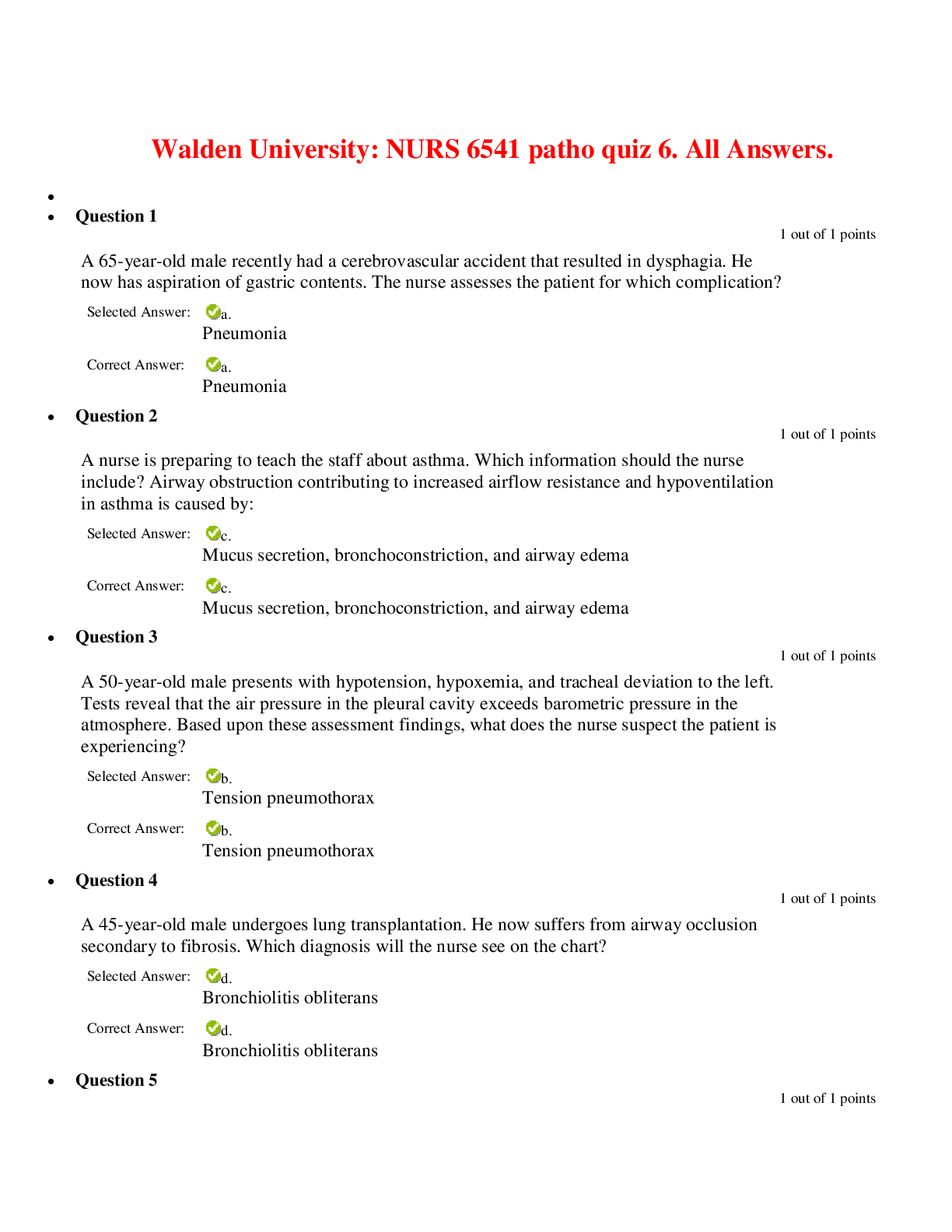





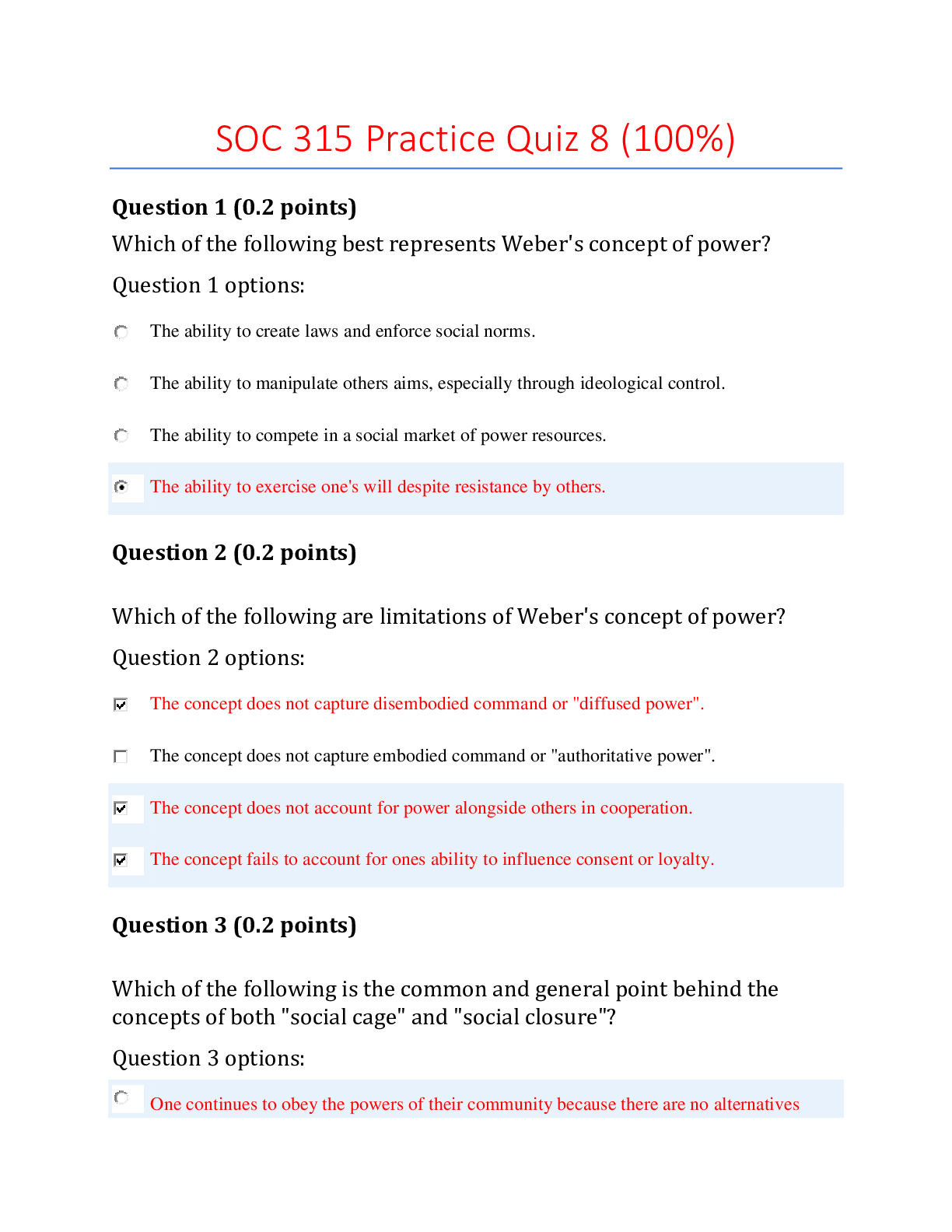
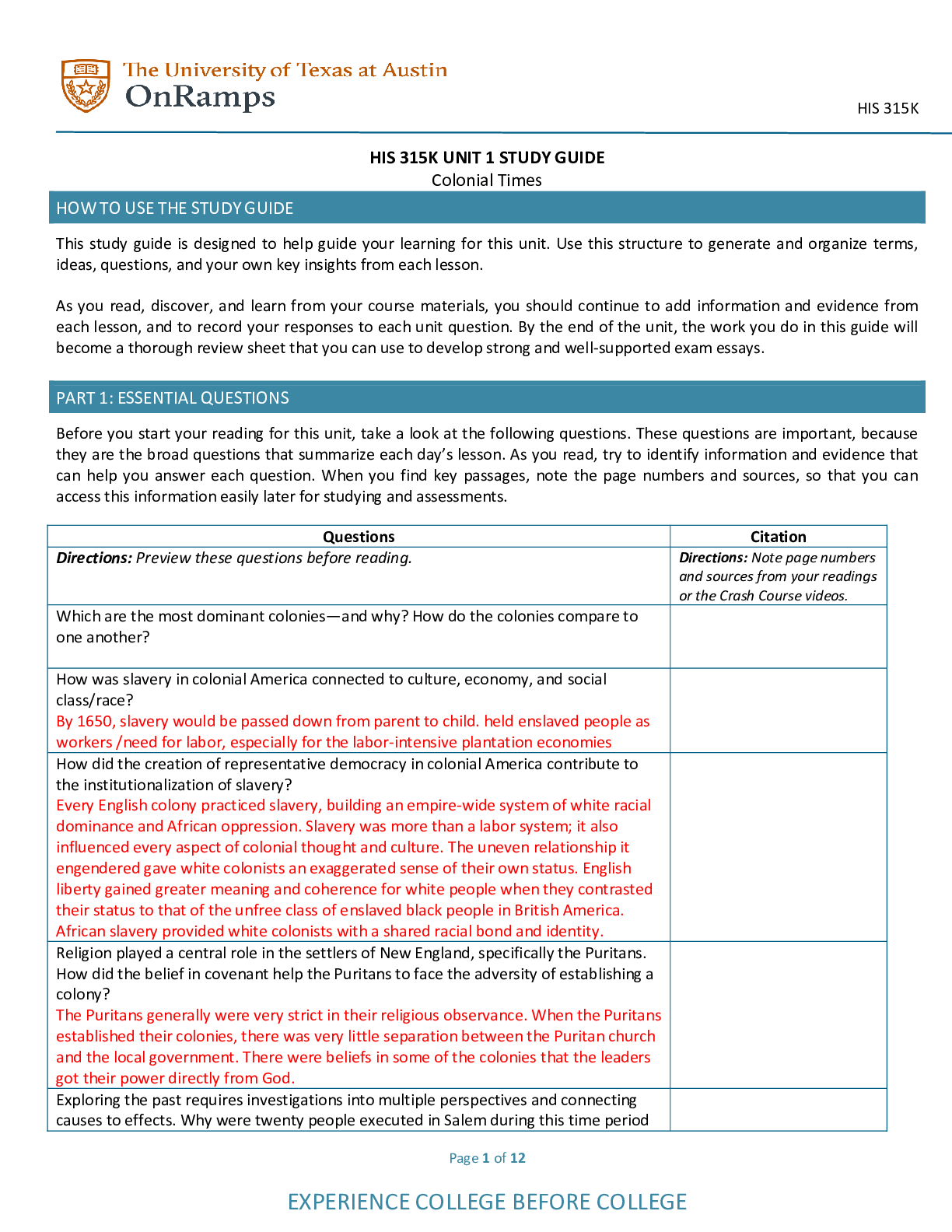
.png)

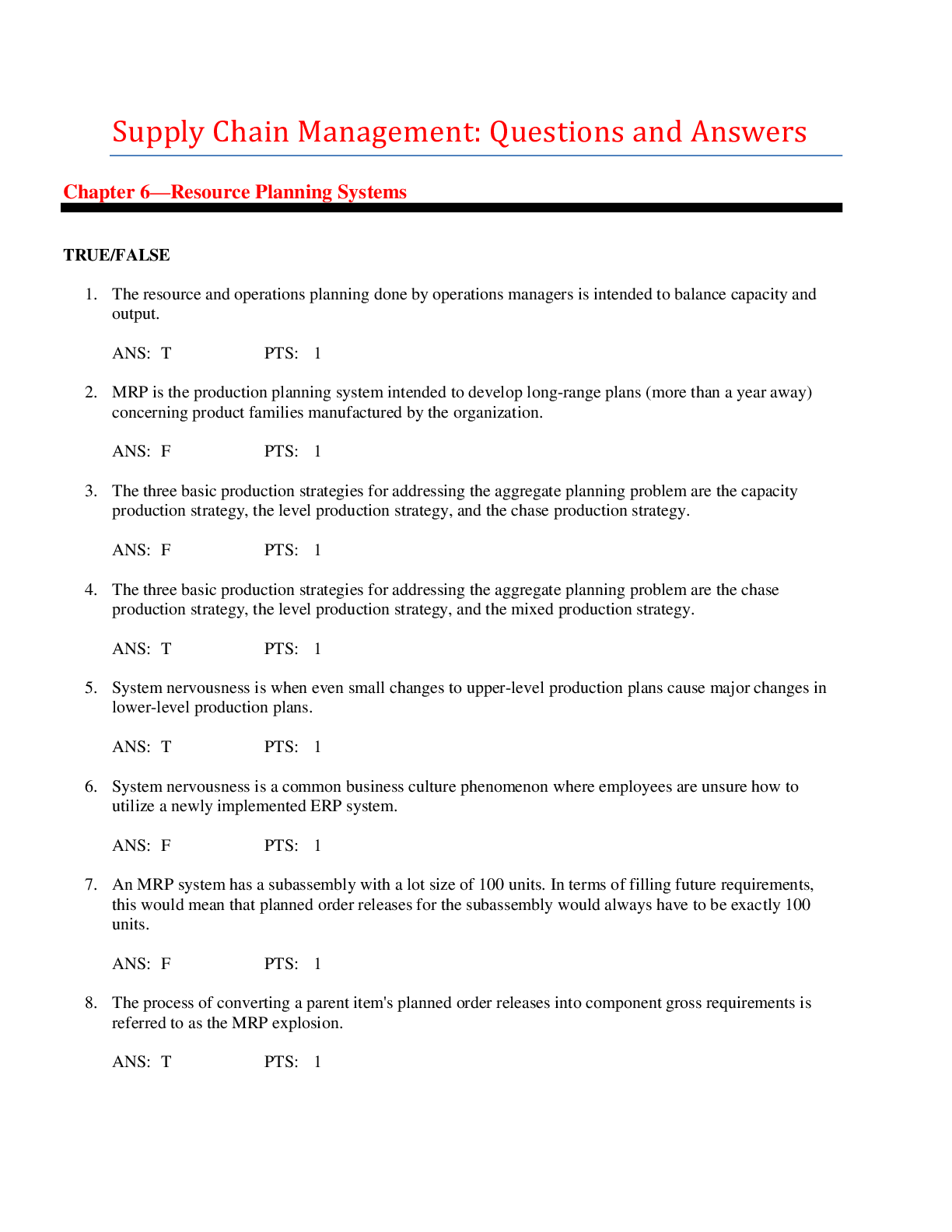
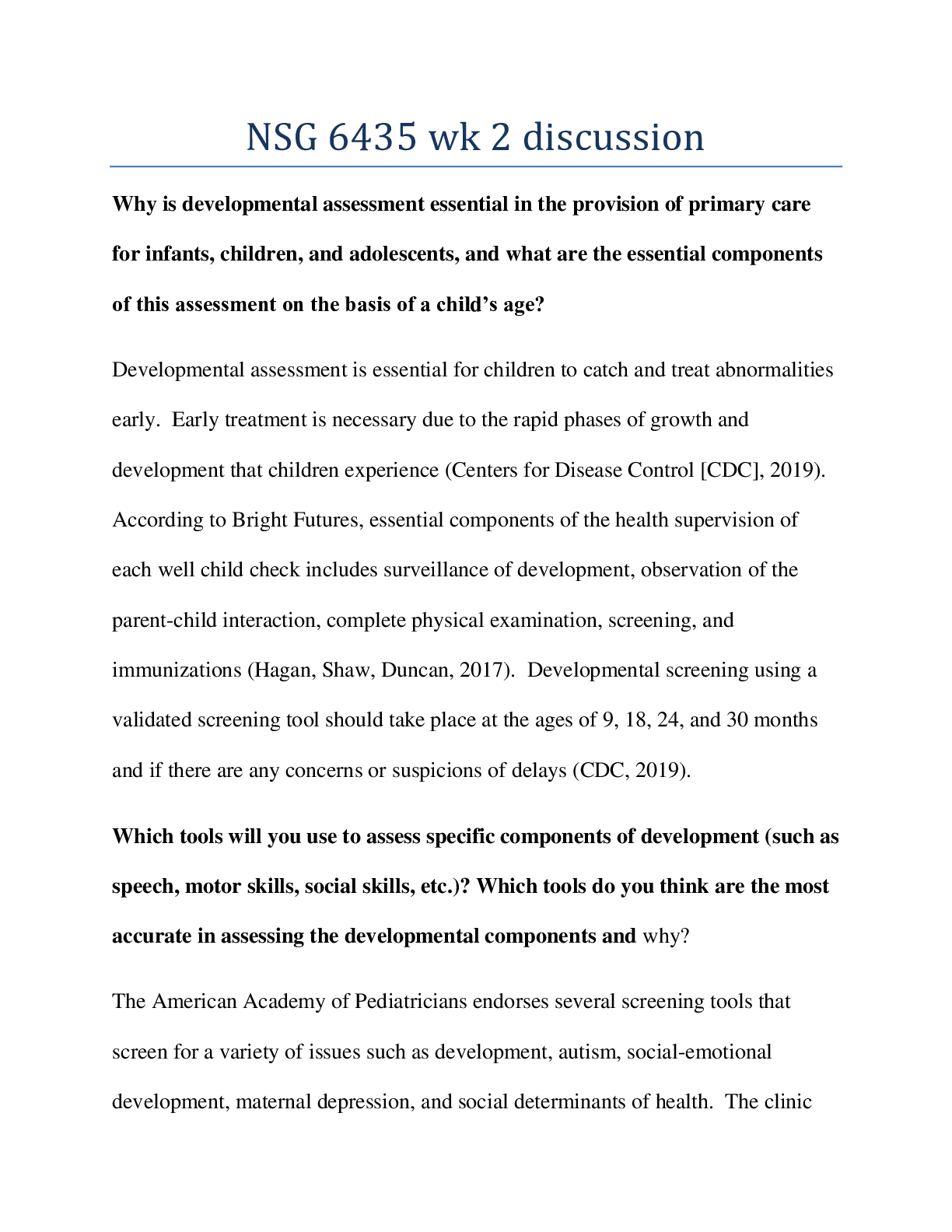

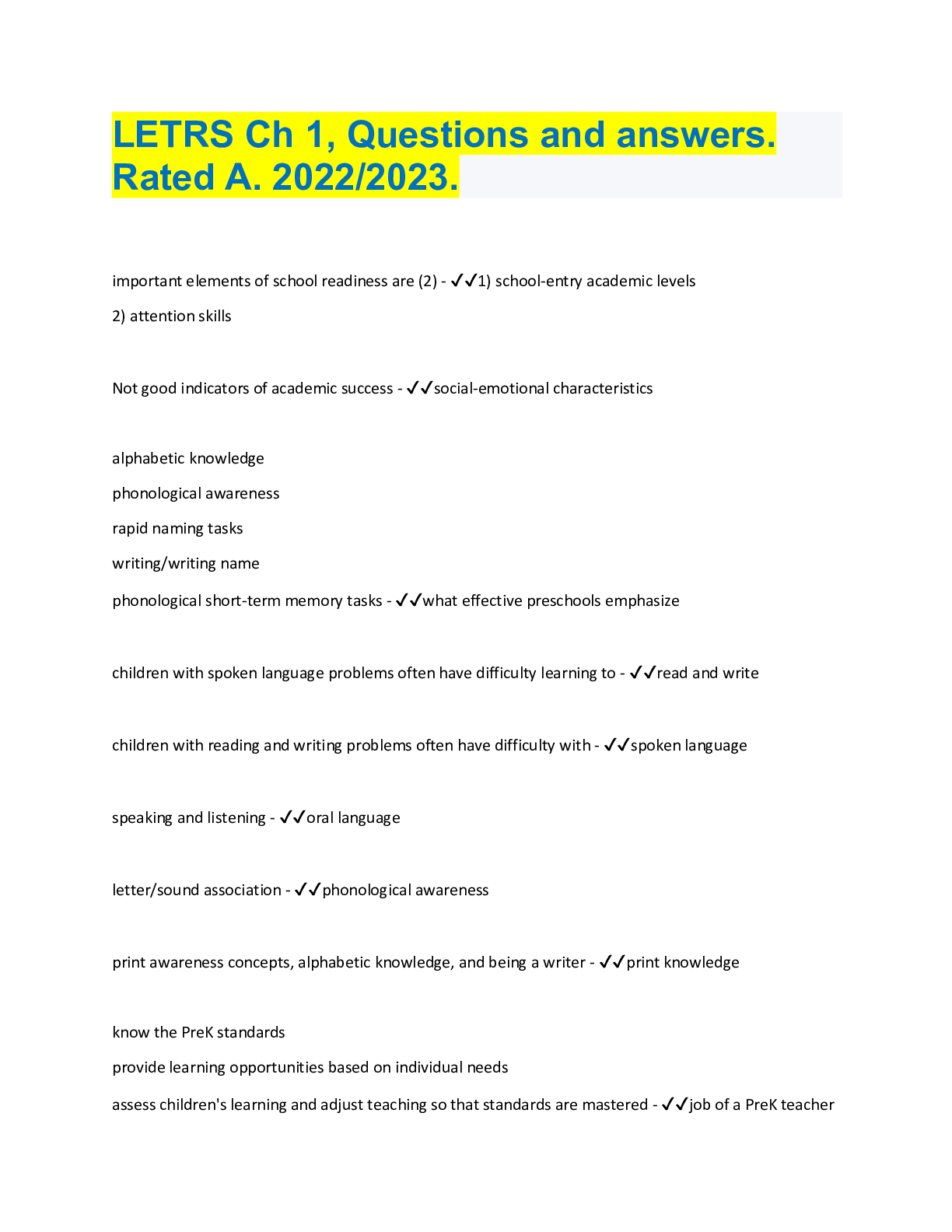
.png)

.png)

